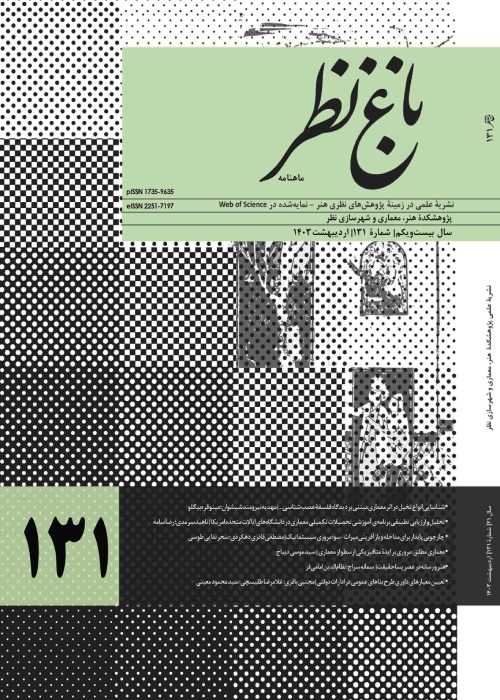The Characteristics of the Cultural Landscape of the Bakhtiari Nomads and its Impact on the Structure of Nomadic Architecture
Author(s):
Article Type:
Research/Original Article (دارای رتبه معتبر)
Abstract:
Statement of the problem: Cultural landscape is a landscape that is affected by culture and is originated from the interactions between humans and nature throughout time. Meanwhile, culture acts as the operant and nature as the mediator and cultural landscape is the product of these two. The cultural landscape of Iranian tribes is very diverse and miscellaneous, to the extent that even in places that are geographically similar to each other we witness deep-rooted differences between them. It should be mentioned that, during recent decades, the lack of attention to the elements that develop cultural landscape has led to the distortion of some local characteristics and destruction of the nomadic cultural landscape. Identifying these factors will be a great help for the life perpetuation of this culturally rich heritage and the revival of these perspectives. In the present research, we are in search of these differences and the factors which cause them among these nomadic people, specifically among Bakhtiari nomads. Furthermore, we are looking for the impact of these differences on their housing and architectural patterns. The question is that "does transformation of culture cause the formation of different cultural landscapes? If so, what are the variables that cause the formation of the nomadic culture and how does it manifest itself it their architecture?
Research
Objective
By utilizing field studies, the present research has studied the most important characteristics of the nomadic cultural landscape and their impact on the structure of their architecture within the subject of cultural landscape. Therefore, the aim of conducting studies on the nomadic architecture and investigating the characteristics of their cultural landscape is trying to identify and present the cultural landscape pattern gained from the nomadic lifestyle.Research
Methodology
This research is conducted based on the qualitative method and relies on description and analysis.Conclusion
The findings show that the following factors play a significant role in the development of the nomadic cultural landscape: climate, pastureland, migration, nomadic camps, subsistence, construction materials, construction technology and its available resources, the status of women, traditions and language, entertainment and leisure, faith, religion and beliefs, color, safety and kinship. The results indicate that geographical and economic factors are influential in the tents shape formation and how they are positioned, the use of local materials and building supplementary structures. The factor of belief is effective on the colors used in the tent, the location of the kitchen in the tent and the status of women. The important factors of the need is effective on the nomadic architecture by establishing a social camp, the positioning of the tents in a way that the sight of every tent complements the other and relevant spaces with entertainment and leisure such as "Kollah". Keywords:
Human , Nature , Nomadic Camp , Culture , Bakhtiari Tribe , architecture
Language:
Persian
Published:
Bagh-e Nazar, Volume:14 Issue: 57, 2018
Pages:
63 to 74
magiran.com/p1803828
دانلود و مطالعه متن این مقاله با یکی از روشهای زیر امکان پذیر است:
اشتراک شخصی
با عضویت و پرداخت آنلاین حق اشتراک یکساله به مبلغ 1,390,000ريال میتوانید 70 عنوان مطلب دانلود کنید!
اشتراک سازمانی
به کتابخانه دانشگاه یا محل کار خود پیشنهاد کنید تا اشتراک سازمانی این پایگاه را برای دسترسی نامحدود همه کاربران به متن مطالب تهیه نمایند!
توجه!
- حق عضویت دریافتی صرف حمایت از نشریات عضو و نگهداری، تکمیل و توسعه مگیران میشود.
- پرداخت حق اشتراک و دانلود مقالات اجازه بازنشر آن در سایر رسانههای چاپی و دیجیتال را به کاربر نمیدهد.
In order to view content subscription is required
Personal subscription
Subscribe magiran.com for 70 € euros via PayPal and download 70 articles during a year.
Organization subscription
Please contact us to subscribe your university or library for unlimited access!


